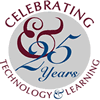PublicationsMining Movies - Technology and Learning Magazine |
||
 |
Star Wars - What “movicians” tell us about the future of educationWhen McLuhan exhumed the past to understand the future he declared that we should be listening to artists if we wanted to know where we were headed. After all, it was the job of the artist to use the technology of the day to paint pictures of tomorrow. Artists were uniquely capable of doing this because they understood better than others the nature of the “ancient human in each of us” (Dertouzos) that drives all of human activity, including the development of our most sophisticated technologies. In this POV series called “Mining Movies” I look for hints of what is to come in technology and learning by examining one of most popular forms of artistic futurism: movies that look at the future. From Star Wars to Minority Report to I Robot, movie artistists – or “movicians” - have been telling us tales about the future that are an excellent source of inspiration about what lies ahead for us as citizens, workers and, above all, learners. I turn to them for guidance. The Force of Holography If there is a touchstone for the beginning of modern futurism in the movies, it is probably Star Wars. In the first episode, we find a technology that will no doubt end up in our schools – as well as our homes and businesses - as a primary teaching tool: the projected holographic image. You may recall a meeting between Luke Skywalker and Obi-Wan Kenobi in which they listen to a message sent from Princess Leia. The message is delivered by R2-D2, the dutiful droid, in the form of a hologram sitting on a table top. In effect, the image was with them in the room as another person and could be viewed from any angle. The need to make the intellectual leap from a flat picture to what something might actually look like was erased. By comparison, our two-dimensional screens seem archaic and rather poor imitations of a teaching tool. Imagine a holographic projection unit in high school auto shop. Future Porche mechanics could learn about a new engine in full dimension from every angle. Imagine a dissected frog, or a chemical experiment, or a play being covered in English class presented as a hologram. Our two-dimensional Internet is a baby step toward the coming tele-presence in schools. Distributed education as well as on-site education will take advantage of the impact and detail that holography offers as a learning tool. And when holography in K-12 fully arrives, may the force be with educators already reeling from cell phones and PDAs in the classroom. |
|
© 2025 jason ohler |
||


